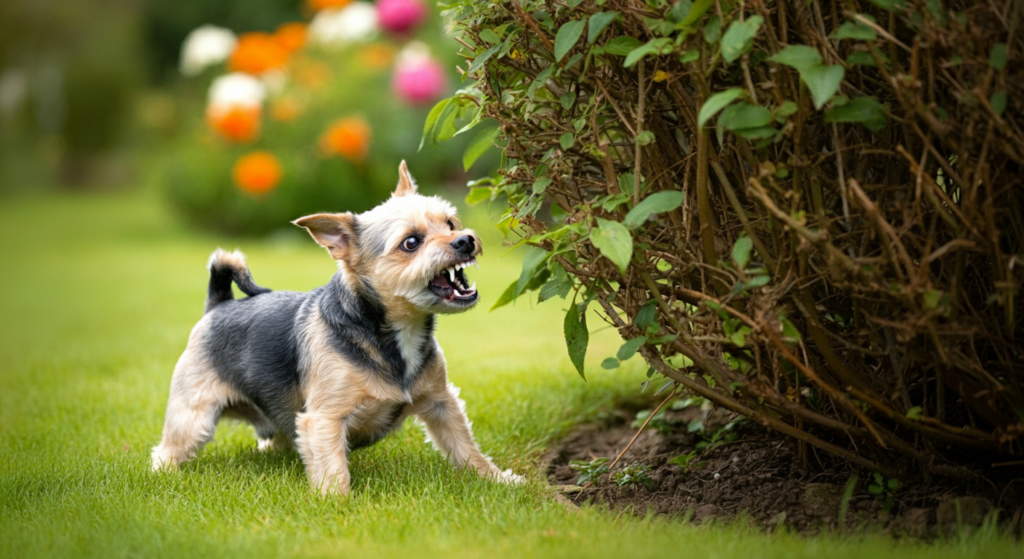Do You Recognize These 8 Signs of Stress in Your Dog?
Dogs, like humans, experience stress. While some stress is a natural and necessary part of life, prolonged or unmanaged stress can negatively impact your dog’s health and happiness. As their trusted companion, it’s essential to recognize the signs of stress and know how to help. This guide will explore the unexpected signs of stress in dogs, why identifying them matters, and actionable steps to provide support.
1. Introduction
Stress isn’t just for humans—our dogs feel it too. But do you know how to spot the subtle signs? Chronic stress can harm your dog’s health, just like it affects ours. Recognizing stress signals early can prevent long-term health issues and behavioural challenges. Let’s explore the ways stress manifests in dogs and what you can do to help.
2. Stress in Dogs: An Overview
Stress is a natural response to challenging or threatening situations, and it plays a critical role in survival—for both humans and dogs. While stress in small doses can be beneficial, helping the body prepare for action, prolonged or chronic stress can have harmful effects. Understanding what stress is, how it affects your dog, and the difference between good and bad stress is the foundation for recognizing and addressing it effectively.
- What is Stress?
- Stress is a physiological response triggered by perceived danger, challenges, or changes in the environment.
- The body releases hormones like adrenaline and cortisol, which prepare it to respond through “fight or flight.”
- While this response is normal and helpful in short-term situations, prolonged activation of the stress response can lead to physical and emotional strain.
- How Dogs Experience Stress
- Like humans, dogs perceive stress differently depending on their temperament, past experiences, and personality.
- Some dogs are naturally more laid-back and resilient, able to handle changes or challenges without much fuss. Others are more sensitive and may react strongly to even minor disruptions in their environment.
- Factors such as age, breed, upbringing, and socialization history also influence how a dog responds to stressors.
- Acute vs. Chronic Stress
- Acute Stress:
- This is short-term stress caused by a specific event, like encountering a loud noise, visiting the vet, or meeting a stranger.
- Acute stress is not harmful if it resolves quickly and the dog can return to a calm state. In fact, it helps keep dogs alert and safe in moments of genuine danger.
- Chronic Stress:
- When stress persists over a long period without resolution, it becomes chronic and can negatively impact your dog’s physical and mental health.
- Chronic stress often results from ongoing issues like poor environment, lack of stimulation, or untreated anxiety.
- Acute Stress:
- Physical and Behavioural Signs of Stress
- Dogs express stress through both physical symptoms and changes in behaviour.
- Physical signs include panting, drooling, trembling, or gastrointestinal issues like diarrhoea.
- Behavioural changes might include excessive barking, pacing, hiding, or loss of interest in play and food.
- These signs often overlap with symptoms of illness, so it’s important to rule out medical issues when identifying stress.
- Common Stress Triggers for Dogs
- Environmental Changes: Moving homes, loud noises (e.g., thunderstorms, fireworks), or new routines can be overwhelming.
- Social Stress: Meeting unfamiliar dogs or people, being left alone (separation anxiety), or conflicts with other pets in the household.
- Physical Discomfort: Pain, illness, or even a collar that is too tight can cause stress.
- Mental Under-Stimulation: Dogs who lack physical exercise or mental enrichment can develop boredom-induced stress.
- Over-Stimulation: On the other hand, too much activity, chaotic environments, or sensory overload can also stress a dog.
- Why Understanding Stress in Dogs is Important
- Dogs can’t verbalize their feelings, so they rely on body language and behaviour to communicate stress.
- Recognizing the signs of stress helps you intervene before it escalates into more severe issues like aggression or chronic anxiety.
- Proactively managing stress creates a happier, healthier environment for your dog, improving their quality of life.
- The Role of Stress in the Human-Dog Relationship
- Dogs are highly attuned to their owner’s emotions. If you’re stressed, your dog may pick up on your energy and mirror it.
- Understanding stress in your dog not only helps them but can also reduce your own stress, as you’ll feel more confident in your ability to provide a safe and nurturing environment.
By understanding the nature of stress in dogs and how it manifests, you’re better equipped to support your pet through challenging situations and ensure they lead a balanced and happy life.

3. Why Recognizing Stress in Dogs Matters
Understanding and addressing stress in dogs is crucial for their overall health, happiness, and well-being. Stress doesn’t just affect your dog’s mood in the moment; it can have long-lasting physical, emotional, and behavioural consequences if left unmanaged. Here’s why paying attention to stress in dogs is so important:
- Physical Health Implications
- Chronic stress can negatively affect your dog’s immune system, making them more susceptible to illnesses and infections.
- Stress has been linked to gastrointestinal issues like diarrhoea, vomiting, or loss of appetite.
- Long-term stress may contribute to cardiovascular strain, skin problems, or even premature aging, much like it does in humans.
- Behavioural Impact
- Stress can cause dogs to develop problematic behaviours such as excessive barking, chewing, or aggression.
- Left unaddressed, these behaviours may escalate and become harder to manage over time, affecting your relationship with your pet.
- A stressed dog may also become withdrawn or overly clingy, limiting their ability to enjoy life or interact positively with others.
- Preventing Escalation
- Recognizing the early signs of stress allows you to intervene before it turns into a full-blown meltdown.
- Dogs in prolonged states of stress may struggle to cope with even minor challenges, creating a cycle of increasing anxiety. Early detection and action can break this cycle.
- Stress Affects Training and Socialization
- Dogs experiencing stress are less likely to focus, learn, or follow commands during training sessions.
- Stress can hinder proper socialization, making it harder for your dog to interact with other dogs, people, or new environments.
- Emotional Well-being
- Dogs, like humans, experience emotions, and chronic stress can make their lives unpleasant and unbalanced.
- Providing a calm, predictable environment helps your dog feel safe and secure, contributing to their overall happiness.
- Strengthening the Human-Dog Bond
- Recognizing and responding to your dog’s stress signals builds trust between you and your pet.
- Dogs look to their owners for guidance and comfort; when you respond appropriately, it reinforces their sense of security and deepens your connection.
- Avoiding Long-Term Consequences
- Chronic stress can lead to more serious conditions like depression, destructive habits, or long-term anxiety disorders.
- Taking proactive steps when you notice stress signs can prevent these outcomes and help your dog lead a healthy, balanced life.
- Promoting Longevity and Quality of Life
- Addressing stress doesn’t just improve your dog’s day-to-day experiences—it can also contribute to a longer, healthier life.
- Dogs free from chronic stress are more likely to stay active, enjoy playtime, and maintain good physical health.
Recognizing stress in dogs isn’t just about fixing a single moment of discomfort; it’s about understanding their needs and ensuring they thrive in every aspect of life. By learning to identify the signs and taking appropriate steps, you can give your dog the best chance at living a happy, healthy, and stress-free life.

4. Eight Unexpected Signs of Stress in Dogs
- Shedding
- During moments of acute stress (e.g., a vet visit or fireworks), you might notice excessive shedding.
- Large tufts of fur may come off suddenly, even if your dog doesn’t usually shed much.
- Yawning
- Stress yawns differ from regular yawns. They may be longer and often accompanied by a squeak or whine.
- This is your dog’s way of self-soothing and trying to regulate their emotions.
- Pacing
- Walking back and forth repeatedly is a common way for dogs to expend nervous energy.
- It’s similar to the behaviour of anxious humans who pace while waiting for important news.
- Hiding
- Some dogs may crawl under furniture, stay in a secluded corner, or even hide behind you when feeling overwhelmed.
- The behaviour may indicate insecurity or a desire to escape the stressor.
- Drooling or Panting
- When your dog hasn’t exercised but is suddenly drooling or panting heavily, it’s often a sign of stress.
- Look for additional signs like tense facial expressions or wide eyes.
- Excessive Licking
- A stressed dog might lick themselves, you, or objects obsessively. This could be an attempt to self-soothe.
- Watch for licking that doesn’t seem related to grooming or affection.
- Refusing Food or Treats
- A typically food-motivated dog who suddenly refuses food might be overwhelmed by stress.
- Loss of appetite, especially in high-stress moments, can signal discomfort.
- Hyperactivity or “Zoomies”
- Stress can manifest as bursts of seemingly playful energy.
- While zoomies are often harmless, in a stressed dog, it’s an outlet for nervousness rather than excitement.
5. What to Do When Your Dog Shows Signs of Stress
- Remove the Stressor or Your Dog
- If a specific situation (e.g., fireworks, bicycles, crowded sidewalks) triggers your dog’s stress, remove the stressor or take your dog away from the environment.
- While this is a short-term solution, plan training sessions to help your dog cope with these stressors over time.
- Provide Comfort
- Offer reassurance by staying close, speaking in a calm voice, and providing gentle touches.
- Don’t worry about “reinforcing fear”; comforting your dog during a stressful moment helps them feel secure.
- Implement Interventions
- Daily anxiety management: Options include CBD oil, calming chews, or prescribed medications for ongoing stress.
- Situational aids: Use tools like a “Thundershirt”, “ADAPTIL diffusers”, or white noise machines to create a calming environment.
- Engagement tools: Distract your dog with stuffed “Kongs, snuffle mats”, or chew toys during stressful situations.
- Create a Safe Space
- Designate a quiet, cosy area where your dog can retreat when feeling overwhelmed.
- Include their favourite bedding, toys, and maybe a crate or enclosed area if they find comfort in it.
- Use Positive Reinforcement Training
- Gradually expose your dog to stress triggers in a controlled environment, rewarding calm behaviour.
- For example, if your dog is scared of bicycles, start with a bike at a distance and reward your dog for staying calm.
- Engage in Regular Physical Activity
- Exercise helps burn off nervous energy and promotes relaxation.
- Tailor activities to your dog’s energy levels, such as brisk walks, fetch, or agility courses.
- Incorporate Mental Stimulation
- Puzzle toys, scent games, and training sessions can divert your dog’s focus from stressors and give them a mental workout.
- Enrichment activities, like hiding treats around the house, keep their mind engaged and reduce anxiety.
- Maintain a Consistent Routine
- Dogs thrive on routine. Consistency in feeding, walking, and bedtime can help reduce uncertainty and stress.
- Avoid sudden changes to their daily schedule whenever possible.
- Monitor Your Own Behaviour
- Dogs pick up on our emotions, so staying calm and composed can help reassure your dog.
- Avoid yelling or displaying frustration, which may escalate their anxiety.
- Desensitize and Counter condition
- Slowly introduce stress triggers at low levels, pairing them with rewards (e.g., treats or play).
- Over time, your dog will associate the stressor with positive experiences.
- Explore Alternative Therapies
- Options like massage, acupuncture, or canine aromatherapy may help reduce stress.
- Ensure you consult a professional to safely explore these methods.
- Seek Professional Help When Needed
- If your dog’s stress becomes unmanageable, consider working with a certified dog trainer or animal behaviourist.
- In cases of severe anxiety, a vet may recommend medications to support your dog’s emotional health.

6. Conclusion
Recognizing stress in your dog is key to ensuring their health and happiness. Chronic stress, left unchecked, can have severe consequences on your dog’s physical and mental well-being, leading to long-term health issues and behavioural challenges. However, as an attentive and proactive owner, you have the power to make a significant difference.
By learning to identify the signs of stress, you can step in early to address and manage the root causes. This not only helps to alleviate immediate discomfort for your dog but also builds resilience and a stronger sense of security over time. Whether it’s providing comfort, implementing practical interventions, or seeking professional guidance, there are countless ways to support your dog through stressful moments and help them thrive.
Caring for a dog means understanding their needs on every level, including their emotional well-being. Recognizing and addressing stress is not just an optional part of pet care—it’s a vital aspect of ensuring they lead a balanced, happy life. As you build awareness and take action, you’ll also strengthen the bond you share, creating a deeper connection rooted in trust and understanding.
Take the time to observe your dog closely. Watch for the subtle signs of stress discussed in this article, and don’t hesitate to step in when necessary. Small, consistent efforts can make a profound impact, transforming stressful moments into opportunities for growth and comfort.
Remember, a calm, happy dog is a healthier dog—and a healthier dog makes for a more joyful and rewarding companionship. By being mindful of their stress and taking proactive steps, you’re not only improving their quality of life but also enriching your own experience as a pet owner. Together, you and your dog can navigate life’s challenges with confidence and calmness.
